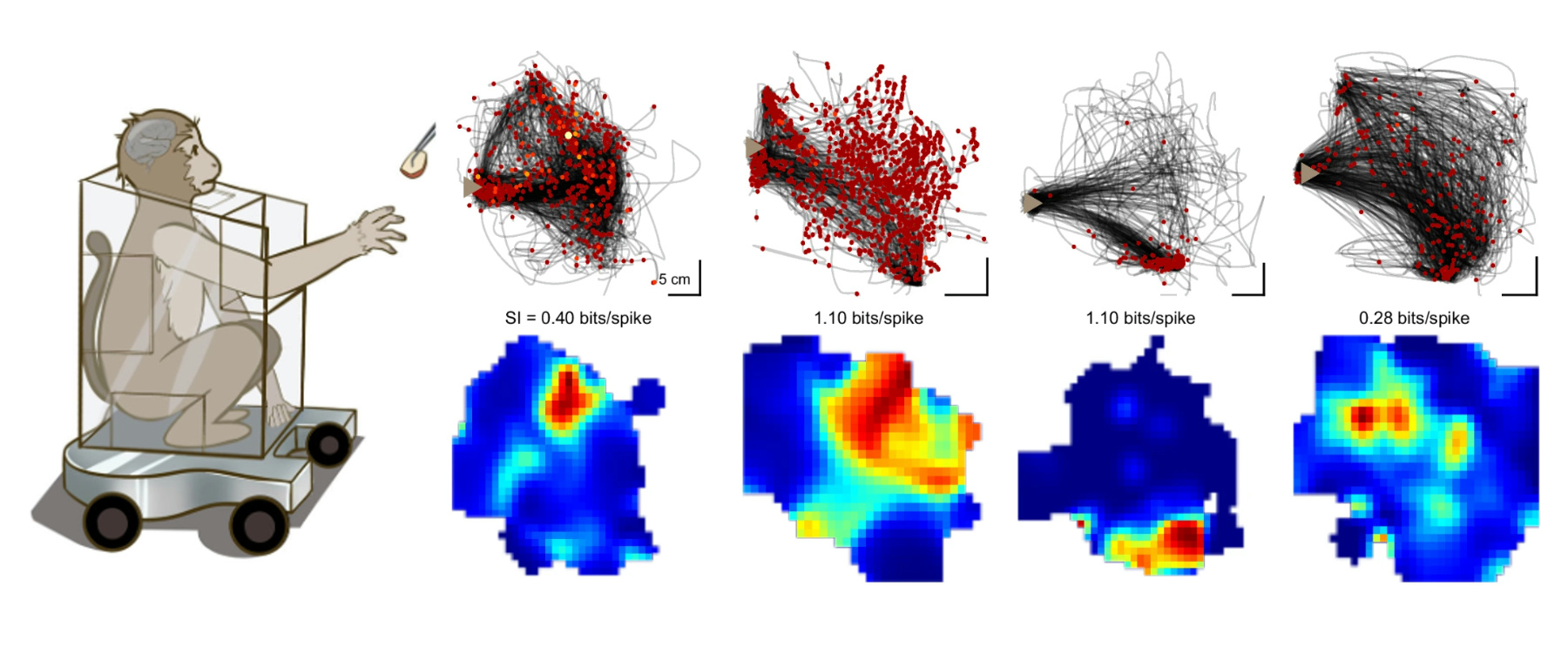Study Reveals How the Macaque Brain "Navigates" Hand Movements: A "GPS-like" Neural Encoding Mechanism
Font:【B】 【M】 【S】
A collaborative research team led by the Laboratory of Brain Atlas and Brain-Inspired Intelligence at the Institute of Automation, Chinese Academy of Sciences, has, for the first time, discovered a “GPS-like” neural encoding mechanism in the motor cortex of macaques during natural grasping tasks.
By recording neural activity while macaques performed these tasks, the team found that the motor cortex can represent the hand’s position in space in real time. This finding offers a new perspective on understanding how the brain controls movement and provides important insights for brain-computer interface (BCI) design and robotic motor control. The related results were recently published in Nature Communications.
Humans and other primates like macaques can skillfully perform a wide range of grasping tasks. How the brain plans and executes these movements has long been a central question in neuroscience.
Previous research showed that “place cells” in the hippocampus provide spatial information for body navigation, helping animals build cognitive maps. However, whether a similar navigational framework exists for movements of the hand or other body parts has remained an open question.
In this study, the researchers implanted microelectrode arrays into the dorsal premotor cortex (PMd) of four macaques to record their neural activity during natural grasping tasks. Simultaneously, multiple cameras tracked the monkeys’ hand movements to analyze the activity patterns of PMd neurons during these tasks.
The study found that approximately 22% of PMd neurons showed significantly increased activity when the hand occupied specific spatial locations, forming “position fields.” These neurons could efficiently and accurately represent the hand’s position in motion.
By using only the top 50 most active position neurons (about 10% of all recorded neurons), the researchers achieved an 80% decoding accuracy of the hand’s movement trajectory. This result demonstrates that hand position information is encoded in PMd as “position fields,” much like the place cells used for navigation in the hippocampus.
Further analysis revealed that hand position information was co-encoded alongside data about movement direction, speed, and the location of the grasp target within the same PMd neuronal population.
This mixed coding strategy enables the brain to simultaneously consider spatial and movement-related information, supporting efficient motor planning and execution. Such mixed coding is also characteristic of how the hippocampus performs spatial navigation, suggesting the brain uses similar computational frameworks for navigating space at different scales.
These findings also offer new ideas for the development of brain-computer interfaces and robotics.
By decoding the activity of these position neurons, it may be possible in the future to achieve more precise and efficient control of neuroprosthetic devices. Similarly, robotic arms could be designed with improved control algorithms inspired by the brain’s movement navigation principles.
This research was jointly completed by the Institute of Automation, Chinese Academy of Sciences; the Ninth Medical Center of the PLA; and the First Hospital of Jilin University.
Shenghao Cao, a PhD student at the Laboratory of Brain Atlas and Brain-Inspired Intelligence, is the first author, with Professor Shan Yu as the corresponding author.
Co-authors include Engineer Xinyong Han and Professor Tianzai Jiang from the Institute of Automation, Professor Jianwen Gu from the Ninth Medical Center of the PLA, and Dr. Zhiping Zhao from the First Hospital of Jilin University.
The study was supported by the “Science and Technology Innovation 2030 – Brain Science and Brain-Inspired Research” Major Project and the National Key Laboratory for Brain Cognition and Brain-Inspired Intelligence.

Macaque Natural Grasping Paradigm and PMd Neuron “Position Field” Activity Patterns
Paper Information:
Cao, S.H., Han, X.Y., Zhao, Z.P. et al. Hand position fields of neurons in the premotor cortex of macaques during natural reaching. Nat Commun 16, 3489 (2025).
Copyright Institute of Automation Chinese Academy of Sciences All Rights Reserved
Address: 95 Zhongguancun East Road, 100190, BEIJING, CHINA
Email:brain-ai@ia.ac.cn